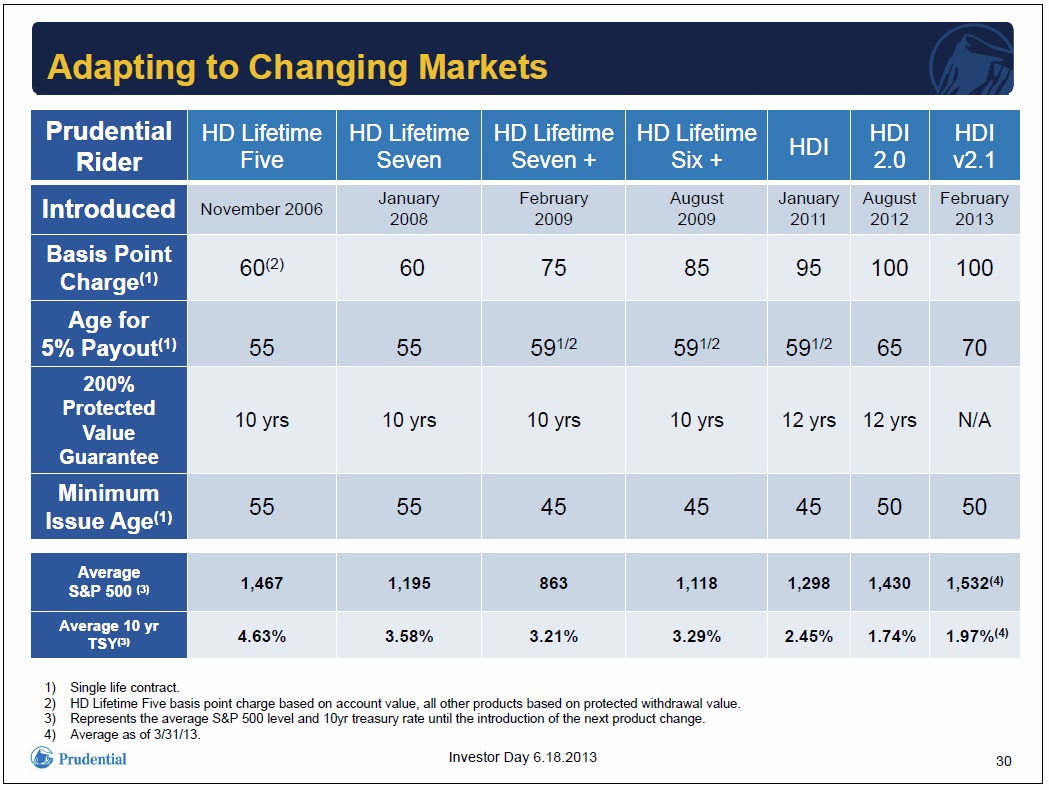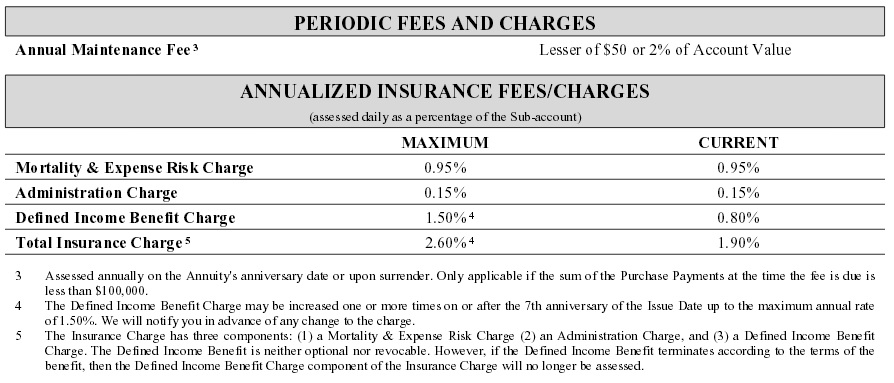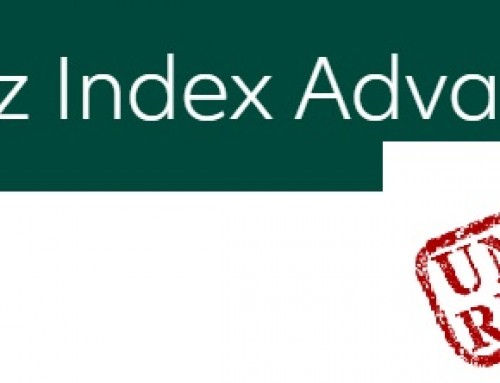The annuity business has grown in popularity as investors, especially those nearing retirement, look for options to protect themselves from stock market volatility and give them a decent income stream in retirement. With over $200 billion in annual sales, the annuity industry is big business with lots of salesmen trying to persuade you to make a purchase.
You will often hear that annuities are sold, not bought. This is exactly why I will go in depth into some of the most popular annuities because there is shockingly little information available about annuities. Most of the information comes from the companies that sell the annuities and they gloss over the fees, risks and downsides. More importantly, annuities have grown into extremely complex instruments which even the most seasoned professional may have trouble deciphering. My philosophy with any investment is to never invest in anything that you don't understand.
It is of the utmost importance to make an informed decision. I have dealt with too many clients that have come to me asking for help getting out of an annuity and I can't help after the fact. Stiff surrender penalties can't be avoided for many years after you sign on the dotted line.
A Perspective That You Can Trust
I am writing this blog from the perspective of a curious analyst. I am totally impartial as I am a fee-only registered investment advisor. I hope to bring a unique perspective to this topic drawing on my years of experience analyzing companies as a research analyst. I've met with hundreds of company CEOs and CFOs and I will use my analytical skills to break down these complex instruments into something easier to understand.
While many investment professionals hate annuities, I do not believe that they are all bad and some of them can make sense as a small part of your investment portfolio. Annuities should never, I repeat never, be the large majority of your portfolio because of their lack of liquidity which is one of their biggest drawbacks.
Issuer Review: Prudential Financial
It is important to look at the issuer of the annuity first because annuities are NOT a guaranteed investment of any sort. This is important to note so I will say it one more time. Annuities are NOT guaranteed. They are only backed by the ability of the issuing insurance company's ability to pay. Therefore if the issuer goes bankrupt, you are at risk of losing everything!
Prudential was founded in 1875 and its headquarters is located in Newark, NJ. I visited with company executives several years ago as it is only a short car ride from our company headquarters. In terms of debt, the company carries low leverage which is good. Standard & Poor's rates Prudential AA- and Fitch rates them A+.
Prudential has over 1.3 million annuity contract holders. It sells its annuities through a network of distributors: 500 Prudential wholesalers, 2,700 Prudential agents and 120,000 third party financial professionals — that is a lot of salespeople to pay commissions to!
Today the company is financially stable and earning good profits for shareholders. Prudential is the largest annuity company in America and it is the largest component of the company's profitability. Since the crisis, the company has had several product changes and introductions to reduce risk and volatility. This benefits the company, not buyers of the annuities! Just take a look at this chart of the evolution of the rider offerings. The fees have been steadily rising as benefits are declining for you, the potential buyer.

Annuity Review: Prudential Defined Income Variable Annuity
Minimum age for initial purchase: 45
Maximum age for initial purchase: 85
Minimum initial purchase payment: $25,000
Prudential stated fee: 1.9%
True all in fee: 2.73-3.43%
Website: www.annuities.prudential.com/investor
Prospectus:
A quick note, the prospectus for this variable annuity is a stunning 116 pages. No joke. This is not a simple product and has lots of fine print. But if you are considering investing thousands or hundreds of thousands of dollars, don't you think you need to know exactly what you are getting into? I've done the heavy lifting by reading the prospectus from cover to cover. I'll give you the highlights.
High Fees!
The huge knock on variable annuities is the high fees that are associated with annuities and this one is no different. It is no surprise that the fee structure is also complex.

Prudential charges 1.1% annually plus 0.8% for its Defined Income Benefit (but reserves the right to increase this fee to 1.5%). Today the Prudential fee amounts to 1.9% but a few years down the line you may be paying 2.6%! Furthermore, the underlying mutual fund fee is 0.83%. This is in addition to the Prudential fee but they likely won't mention it at all.
Therefore the True annual fees are currently 2.73% but can increase to 3.43%.
Beware of Surrender Fees
Surrender charges are flat out nasty as is typical with most annuities. They want to lock you in for at least 7 years. If you need the money within the first 2 years, you are hit with a 7% penalty fee. Between years 2 and 4, you are subject to a 6% penalty fee and between years 4 and 7, you are subject to a 5% penalty fee. I believe this is the worst feature of annuities. These are huge lockup fees and if you need the money, they sock it to you. This is why annuities should NEVER be a significant part of your investment portfolio because they are essentially illiquid for the first 7 years. Unless you are positive you will not need access to these funds, then annuities are NOT for you.
Under the Hood of the Prudential Variable Annuity
The Prudential Defined Income Variable Annuity is a variable annuity with a Guaranteed Lifetime Withdraw Benefit (GLWB). The GLWB guarantees a lifetime income for the contract owner no matter how long they live or what the market does. Even if the investment portfolio went to zero, the GLWB keeps on paying income.
Prudential's guaranteed income stream is actually quite attractive when you compare it to most competitive products and to current interest rates. It does so by limiting your investment option to just one option: the AST Multi-Sector Fixed Income Portfolio. As per the prospectus, the duration of the portfolio is typically 8-12 years and it holds mostly high grade corporate debt; however it can own up to 10% in junk bonds and 30% in foreign denominated debt. This type of duration carries significant risks in a rising rate environment.
Like many investors in recent years, Prudential has been trying to move away from the risk and volatility of equity investments. In this case, Prudential has lowered their risk by limiting the annuity owner to a fixed income portfolio which is more stable and predictable. Prudential would only get into trouble if the underlying bond portfolio can't produce enough income to cover the GLWB payments.
If you have additional questions about this section, please submit a question using our secure form. We will answer your questions within 24 hours via email. No strings attached, just a little free help to point you in the right direction.
The Prudential pitch as per their shiny brochure
Prudential Defined Income can help you:
- Guarantee income certainty without investing in equities
- Grow your future retirement income amount at a guaranteed Income Growth Rate until the first Lifetime Withdrawal
- Ensure your income lasts a lifetime (or two, if electing the spousal option)
- Maintain access to your account value (subject to contract terms)
- Provide a guaranteed death benefit for your beneficiaries
Most salespeople will likely highlight the guaranteed income benefit which is totally legit. However, don't let them try to overpromise and under deliver on the investment returns. Many agents misrepresent how this annuity will actually perform over the life of the policy. Many agents will highlight that income growth is currently 6% and they may lead you to believe that this is the actual expected return. Sorry but this isn't the case. If you have an honest agent, they shouldn't give you the impression that you can earn more than 2-4% and given historically low interest rates, it may very well produce no growth at all! If your agent pitches you on big investment returns on this product, I highly suggest changing agents and at the very least seeking a second or third opinion immediately.
Who should buy this product?
In summary, this product only makes sense for an extremely conservative investor who is looking for guaranteed income with no market risk. If you are happy with 0-4% returns and a guaranteed income stream, then this product may be acceptable for you. Be sure to evaluate how it fits into your entire investment strategy and how it will help you reach your financial goals. If you like this annuity, then I'd suggest comparing it to other fixed income variable annuities with GLWB to see how the income streams and fees stack up. There may be better options available.
In the end, not very many of us should be investing in this annuity. Why? For one, the high fees are eating into your returns. With a true fee of up to 3.43%, it makes most mutual funds actually look inexpensive! Secondly for those seeking any growth, this annuity isn't likely to produce much better than low single-digit returns and I would argue that you may see no growth. Because interest rates are still near historic lows, the AST Multi-Sector Fixed Income Portfolio could actually suffer losses. Please read my previous blog post Are your bond assets safe in a rising rate environment? for more information on bond risk. If your agent is promising or even suggesting returns of 5% or higher, then I'd be highly skeptical and seek a second opinion. Don't confuse the 6% income growth rate with investment returns! They are worlds apart.
If you think this annuity is right for you, then definitely read the 116 page prospectus from cover to cover. Because you should never invest in something that you don't fully understand.
Thanks for sticking with me on this incredibly long blog post. I hope you are able to make a more informed investment decision. Please don't let your agent pressure you into a sale before you have made an informed decision. Since annuities lock you into a long-term contract with stiff surrender fees, please be sure to take your time to make the best possible decision for you and your family.
“Annuities stock photo” by lendingmemo_com is licensed under CC BY 2.0
If you have questions about this annuity, please share them in the comments section below or visit our secure page to submit a question.







